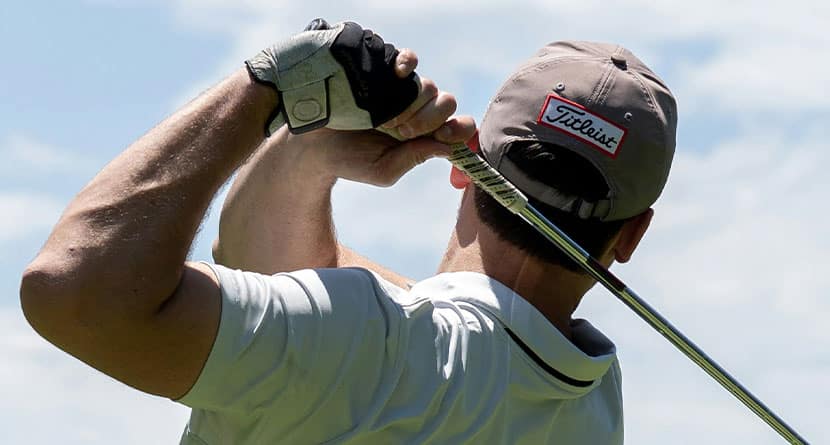- Three main golf grip types exist – neutral, strong, and weak grips – which influence clubface angle
- Properly place lead hand diagonally across fingers, trail hand wrapped for stability
- Grip affects clubface control, swing plane consistency, and power transfer
- Experiment with different grips and hand placements until you find what works best for your swing
In golf, where a fraction of an inch can dictate the ball’s fate, gripping the club properly becomes paramount. It’s the foundation for a controlled and repeatable swing, one that generates power while maintaining the accuracy needed to achieve your best score. But with so many grip styles from which to choose — each with their own intricacies — how does a novice player navigate this crucial aspect of the game?
Let’s demystify the golf club grip basics and shed some light on the importance of a proper golf grip.
Understanding the Grip Types:
- Neutral Grip: This classic grip positions both hands facing each other, promoting a square clubface at impact. Ideal for beginners and those seeking neutral swing feedback.
- Strong Grip: Rotating both hands slightly clockwise encourages a closed clubface at impact, suitable for players who tend to slice the ball.
- Weak Grip: Conversely, rotating hands counter-clockwise favors an open clubface, beneficial for players struggling with hooks.
Mastering Proper Hand Placement on a Golf Club:
- Lead Hand (Left Hand for Right-Handed Players): Place the club diagonally across the base of your fingers, with the “V” formed by your thumb and forefinger pointing towards your trail shoulder. Your thumb should be positioned slightly down the shaft for a secure hold.
- Trail Hand (Right Hand for Right-Handed Players): Wrap your hand naturally around the grip, interlacing your fingers with the lead hand in either an overlapped grip, where the pinkie of your trail hand rests on the index finger of your lead hand, or an interlocked grip, where your pinkie and index finger intertwine. Both styles offer stability. Personal preference plays a key role in selecting between overlapped vs. interlocked grips.
Why is Grip So Important?
A proper grip influences several key aspects of your swing:
- Clubface Control: It dictates the clubface angle at impact, impacting ball direction and trajectory.
- Swing Plane: A secure grip promotes a consistent swing plane, leading to more reliable shot results.
- Power Transfer: A firm yet relaxed grip allows for efficient power transfer during the swing, generating distance.
Tips for Finding Your Grip:
- Experiment: Try different grip types and hand placements to discover what feels most comfortable and produces consistent results.
- Seek Guidance: A qualified instructor can analyze your grip and recommend adjustments for optimal swing mechanics.
- Practice Makes Perfect: Integrate grip drills into your practice routine to build muscle memory and solidify your preferred grip.
Keep in mind that your grip isn’t a static entity. Tiger Woods has tinkered with multiple types of golf grips and found success with each one. Adapt your grip based on the feedback you’re getting at the driving range and on the course. By mastering the fundamentals, you’ll discover the importance of a proper golf grip, paving the way for lower scores and a more enjoyable golf experience.




